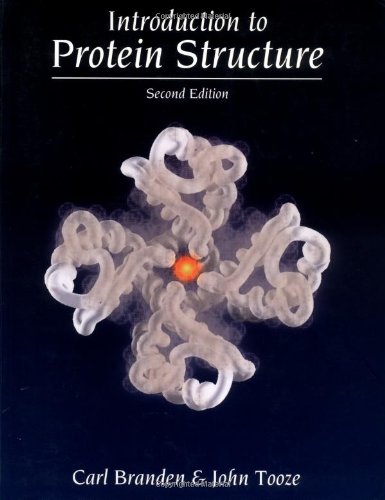Introduction to Protein Structure book
Par langham donald le mardi, janvier 10 2017, 13:37 - Lien permanent
Introduction to Protein Structure. Carl Branden, John Tooze

Introduction.to.Protein.Structure.pdf
ISBN: 0815323050,9780815323051 | 415 pages | 11 Mb

Introduction to Protein Structure Carl Branden, John Tooze
Publisher: Taylor & Francis
Computer Networks and Distributed Systems Notes slide January 18: Chapter 1 Intro by Anda Iamnitchi . In general, the class will be a survey . A team led by David Reverter, a researcher at the Institute of Biotechnology and Biomedicine (IBB) of the UAB, has determined for the first time the three-dimensional structure of a protein pair: LC8 and Nek9. Our publications include such classics as “Molecular Biology of the Cell,” “Essential Cell Biology,” “Janeway's Immunobiology,” “The Immune System,” “Human Molecular Genetics,” and “Introduction to Protein Structure.”. This page provides an automatically updated summary of all antibody structures in the Protein Databank. MHC class I Structure and Function. Examples of other computational techniques that we will cover in this seminar are microarray analysis, molecular dynamics simulations, protein structure prediction and determination, all of which are routinely used to develop, guide, and check biological hypotheses. I'm giving a lecture next week to the Bioinformatics Masters students here about protein structure prediction. The Protein Crystallography Station at Los Alamos Neutron Science Center is a high-performance beamline that forms the core of a capability for neutron macromolecular structure and function determination. The text given, “Introduction to Protein Structure” from Branden and Tooze explains the basic principles of protein structure. Introduction to Protein Structure Introduction to Protein Composition supplies an account of the ideas of protein framework, with examples of essential. These proteins are coded by three genes HLA-A, HLA-B and HLA-C present on the short arm of chromosome 6. By David Whitford Book Description Proteins: Structure and Function is a comprehensive introduction to the study of proteins and their importance to modern biochemistry. Introduction; Molecular Recognition Processes; Nucleic Acids; Protein Structure; Proteins as Catalysts; References. However, NMR investigations are limited by the size of the protein system, while ESR requires the introduction of spectroscopic probes into the system via site-directed spin-labeling (SDSL) techniques. At the first chapter introduces the biochemical description of proteins. These are glycoproteins found on all nucleated cells. Macromolecules: Structure, Shape, and Information.